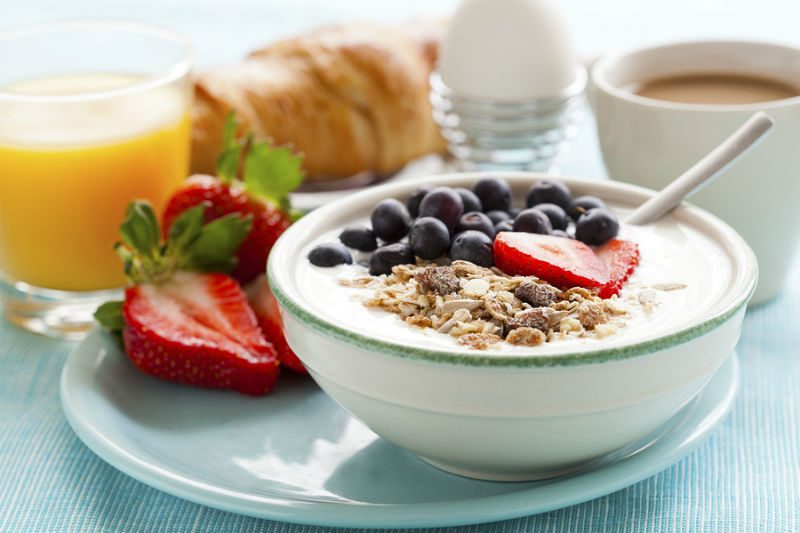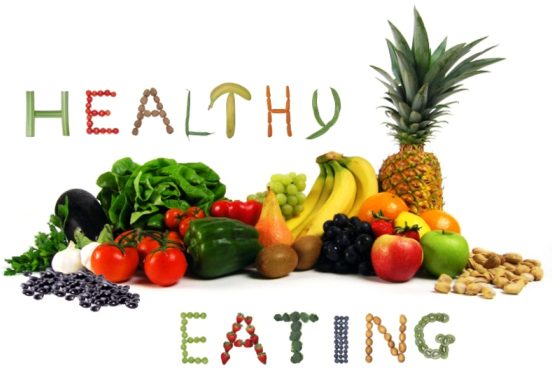There’s good fat and bad fat…our nutritionist explains the difference.
What exactly is a low-FODMAP diet?
The low FODMAP diet has been scientifically proven to help ease the symptoms of irritable bowel syndrome (IBS). These usually include abdominal bloating, excess wind and unwelcome changes in bowel habits (such as diarrhoea or constipation, or both). This eating plan was developed to help the one in seven people who suffer from IBS. If you have any IBS symptoms, it is important to have a health professional rule out other possible causes, like celiac disease.
FODMAP is simply an acronym for the scientific names of five naturally occurring sugars.
Fermentable sugars are poorly absorbed in the small bowel (or intestine), so bacteria ferment them in the large intestine.
Oligosaccharides are sugar chains that include fructans and galacto-oligosaccharides.
Disaccharide is lactose , which is a double sugar.
Monosaccharide is fructose a single sugar.(The small intestine has trouble absorbing fructose only when a food contains more fructose than glucose.
And
Polyols are sugar alcohols which include sorbitol, mannitol, xylitol and maltitol.
When the small intestine has trouble absorbing FODMAPs they travel through to the large intestine. Here, they not only attract water, but also become a food source for bacteria. If you are sensitive to FODMAP sugars, you should limit or avoid foods high in FODMAPs. Some common culprits include lentils, chickpeas, wheat, garlic, onions, artificial sweeteners and some fruits (such as apple). You should see a dietician for a consultation on FODMAP.
I work night shifts, so I eat breakfast at 1pm and dinner at 6pm before I start work, which finishes at midnight. I am hungry when I get home, but it is time for bed, so what do I eat for dinner?
The body’s natural rhythms respond to food differently according to the time of day. For example, you digest food best during daylight hours, so this is when you should eat most of your food. Of course, shift work can make it difficult to juggle meals, because you are often hungry at times when you don’t normally eat. Try eating slightly larger meals at 1pm and 6pm, and then have only a light meal after work. You may also find it helpful to pack a snack to eat on the run, preferably one with a low glycaemic index (GI), such as a muesli bar or a piece of fruit. To curb late night hunger pangs at work, have 30g nuts or a milky drink at 9.30 or 10 pm. For that post shift midnight meal, pick foods that have a low GI, make sure you include a small serve of protein and either a small fruit or vegetables. Enjoy any one of these options: a small bowl of soup, a slice of multigrain toast and an egg, half a cup of baked beans on toast, a small salad with legumes, low fat cheese on wholegrain crackers, fruit and yoghurt.
After your shift, avoid drinking alcohol or eating a large meal, as doing either makes your body produce heat, which may adversely affect sleep. Unfortunately, poor quality sleep can alter your appetite hormones, triggering hunger and causing you to make less than healthy food choices. You should also avoid eating spicy or fatty foods late at night, as these are more likely to cause heartburn.
 I buy quick-cook oats because they help me get breakfast on the table during the school rush – but are they as healthy as regular oats?
I buy quick-cook oats because they help me get breakfast on the table during the school rush – but are they as healthy as regular oats?
Quick-cook oats (which we call instant oats or microwave oats) are just as nutritious as traditional rolled oats and super convenient. To make quick-cook oats, manufacturers simply roll wholegrain oats until they’re thin, then steam and grind them into smaller pieces. This allows the oats to cook much faster (usually in roughly two to three minutes) and gives them a smooth, creamy texture. Both traditional and quick oats are rich in beta-glucans, which help lower cholesterol absorption; however instant oats have a slightly higher Glycaemic Index as they are more refined. This means that you digest them more easily then you do classic rolled oats, but you may not feel full for quite as long. Also, some instant oat sachets contain sugar or other sweeteners, or both. Such varieties are also slightly lower in fibre than regular oats. So if you prefer convenience of individual sachets look for ‘original’ or high fibre varieties.
How can I cope with my cravings for chocolate?
Next time you have chocolate on the brain, walk it off – literally. A new study showed that people who do a quick 15-minute stroll before sitting down to task ate only half the amount of chocolate as those who had rested at their desk. Breaking up sedentary behaviour with even short bouts of activity can help curb your cravings. Exercise not only serves as a distraction, but also increases your body’s levels of endorphins, which can combat stress and suppress appetite.
Many people find if they eat something bitter or sour – like a pickled cucumber or lemon juice, the craving for sweet passes.
It is often better not to give in to your desires for chocolate, as one square triggers off a binge on a bar or more. Sugar is addictive, the more you have the more you crave.
Can you tell me the different types of fat and which are good for you and which ones I should avoid. Every one has a different story. Also can you tell me what foods they are found in.
Fat enhances the flavour and texture of foods and although the body can make some of its own fats, we do need to eat some each day to maintain good health. Fat is essential for supplying food for cells, carrying fat soluble vitamins and antioxidants, providing protection for organs, building some hormones, etc. Foods contain a combination of different fats: saturated, trans, monounsaturated, polyunsaturated, Omega-3s. Monounsaturated and polyunsaturated fats are beneficial for health, helping to lower blood cholesterol levels, Omega-3 fats help lower elevated blood pressure and may reduce inflammation in the body. Saturated and trans fats should be limited in the diet as they have been shown to raise cholesterol levels in the blood increasing the risk of heart disease and possibly increasing the risk of high blood pressure, Type 2 Diabetes and some types of cancer. Fat is a concentrated source of energy so too much of it can contribute to weight gain.
Monounsaturated fat – avocados, macadamia nuts, hazelnuts, peanuts, almonds, canola, olive, some margarines
Polyunsaturated fats – Walnuts, Brazil nuts, pine nuts, seeds, safflower, sunflower, sesame. Omega-3s – Oily fish, soybeans, linseeds walnuts and omega-3 enriched foods such as eggs.
Saturated fats – meat fat, chicken skin, butter, coconut, full cream dairy products, pies, cakes, biscuits, many takeaway foods.
Trans fats – Biscuits, pastries, chocolates, some margarines.
